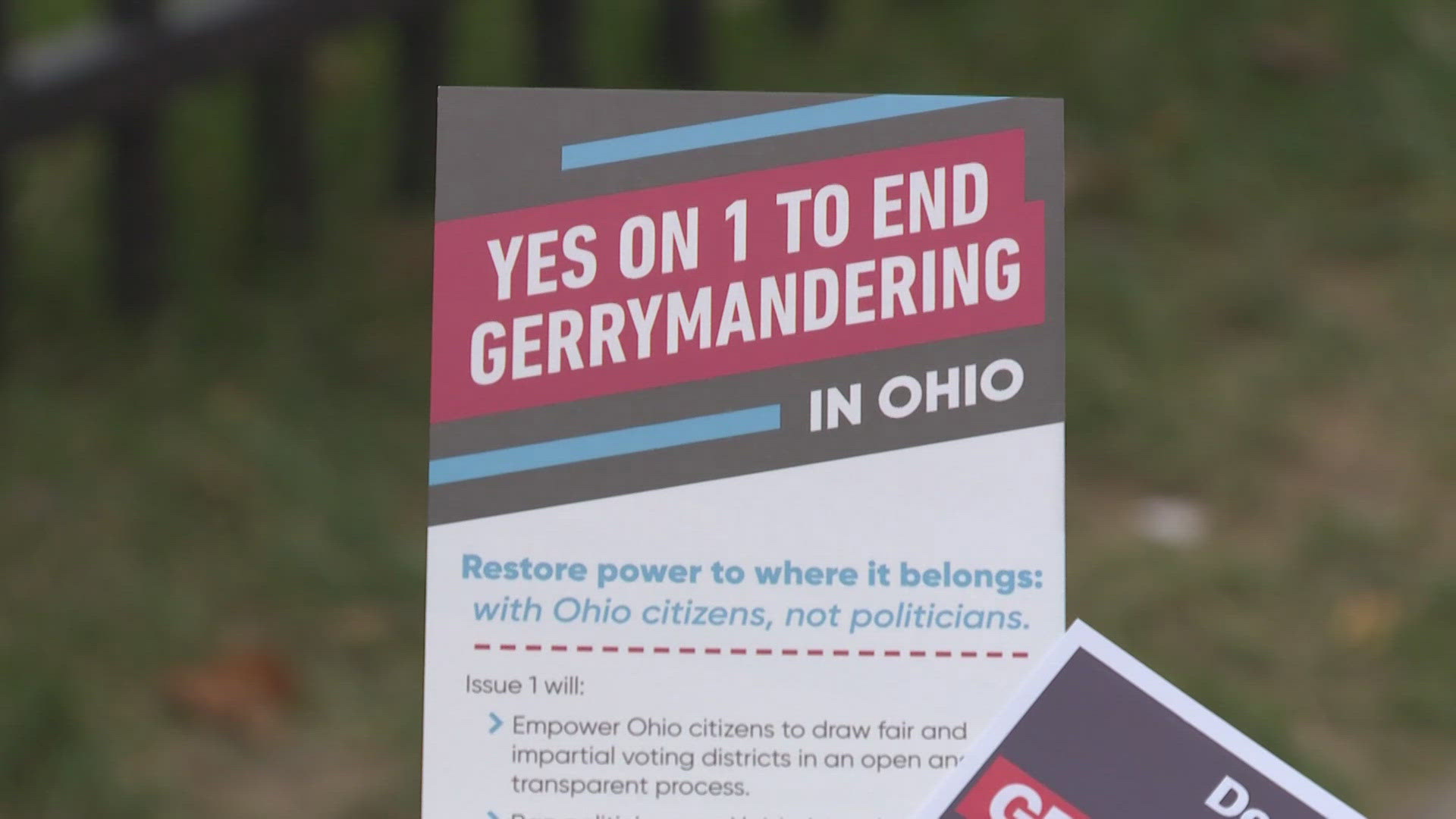CLEVELAND — Counties across Northeast Ohio have reported record or near record-breaking numbers for early voting this election, and one of the biggest questions for voters is State Issue 1.
The group behind the proposed constitutional amendment, Citizens Not Politicians, argues the ballot language is biased and misleading. But the Ohio Supreme Court largely upheld the language in a ruling in September. It’s the largest section for a statewide race or issue on the ballot and for many voters it's one of the more confusing issues.
Supporters say State Issue 1 is Ohio’s path to end gerrymandering in the state. But, according to the page-long language on your ballot, the amendment would create a commission “required to gerrymander the boundaries of state legislative and congressional districts.”
No wonder some voters 3News’ Matt Rascon spoke to were confused. 3News has also received emails from confused voters.
“Everything seems contradictory. It’s very confusing,” early voter Sierra Mcgaughey said. “Reading through the entire ballot for that it’s not clear what’s going on whatsoever.”
“Oh it was just all the wording. I don’t know, a bit of pressure when you’re in there for time,” early voter Ron Perrotti said.
Lisa Patterson said she didn’t bother reading through the language on the ballot, but she did do her homework before coming to the Board of Elections Office. All voters we spoke to recommended doing research prior to voting.
What would State Issue 1 do?
The proposed constitutional amendment is 31 pages long. It would set up a bipartisan panel of four retired judges tasked with sifting through a pool of candidates to create a citizen’s commission. The commission would be made up of five Republicans, five Democrats, and five independents. Party leaders, politicians and lobbyists would not be eligible.
If Issue 1 passes, it would void all existing district maps and get rid of the current Ohio Redistricting Commission made up of seven elected officials and lawmakers — five are Republicans, two are Democrats.
Opponents argue the amendment would require districts to be gerrymandered — or manipulated to favor one party — to ensure Republicans and Democrats can each win a set number of seats.
But State Issue 1 language says it would ban gerrymandering by requiring the voting districts to “closely correspond” to statewide party preferences.
“To ban partisan gerrymandering and prohibit the use of redistricting plans that favor one political party and disfavor others, the statewide proportion of districts in each redistricting plan that favors each political party shall correspond closely to the statewide partisan preferences of the voters of Ohio.
Nine members would have to approve the maps and the public could weigh in during several public meetings.
“I read the spark notes of it essentially and I knew what to vote on but if I had just gone in reading what was on the ballot, I probably would have skipped it,” Perrotti said.
Perrotti and other voters we spoke to recommended doing your homework before heading to the polls.

